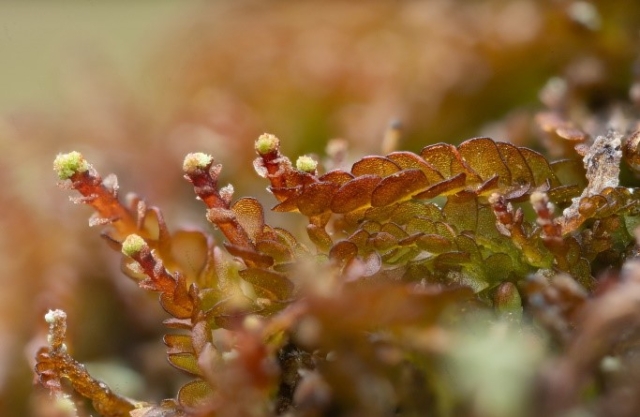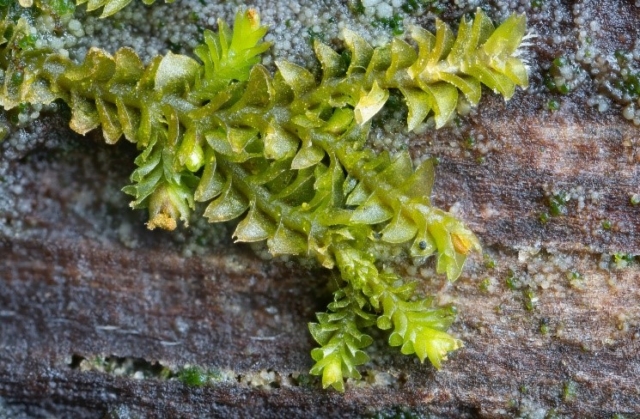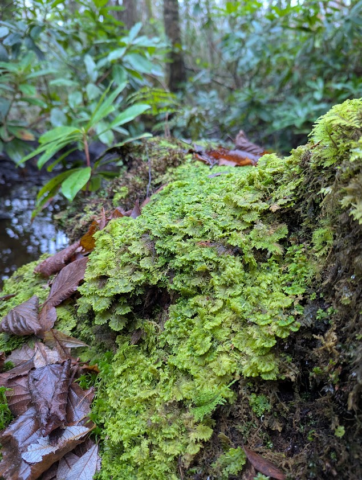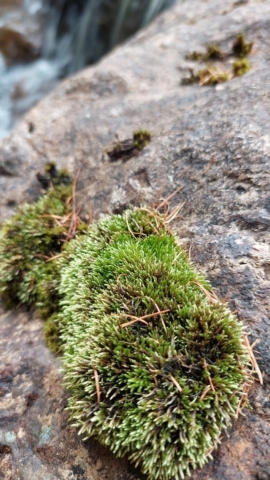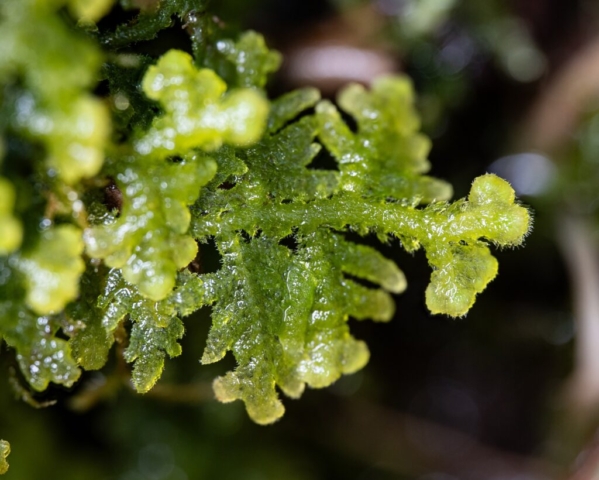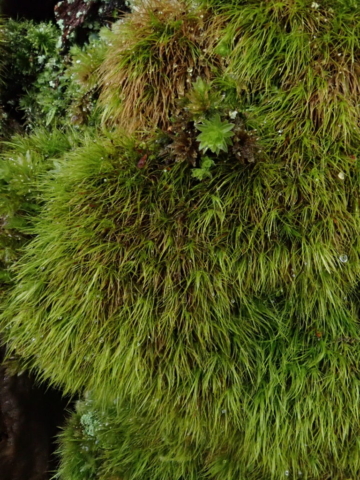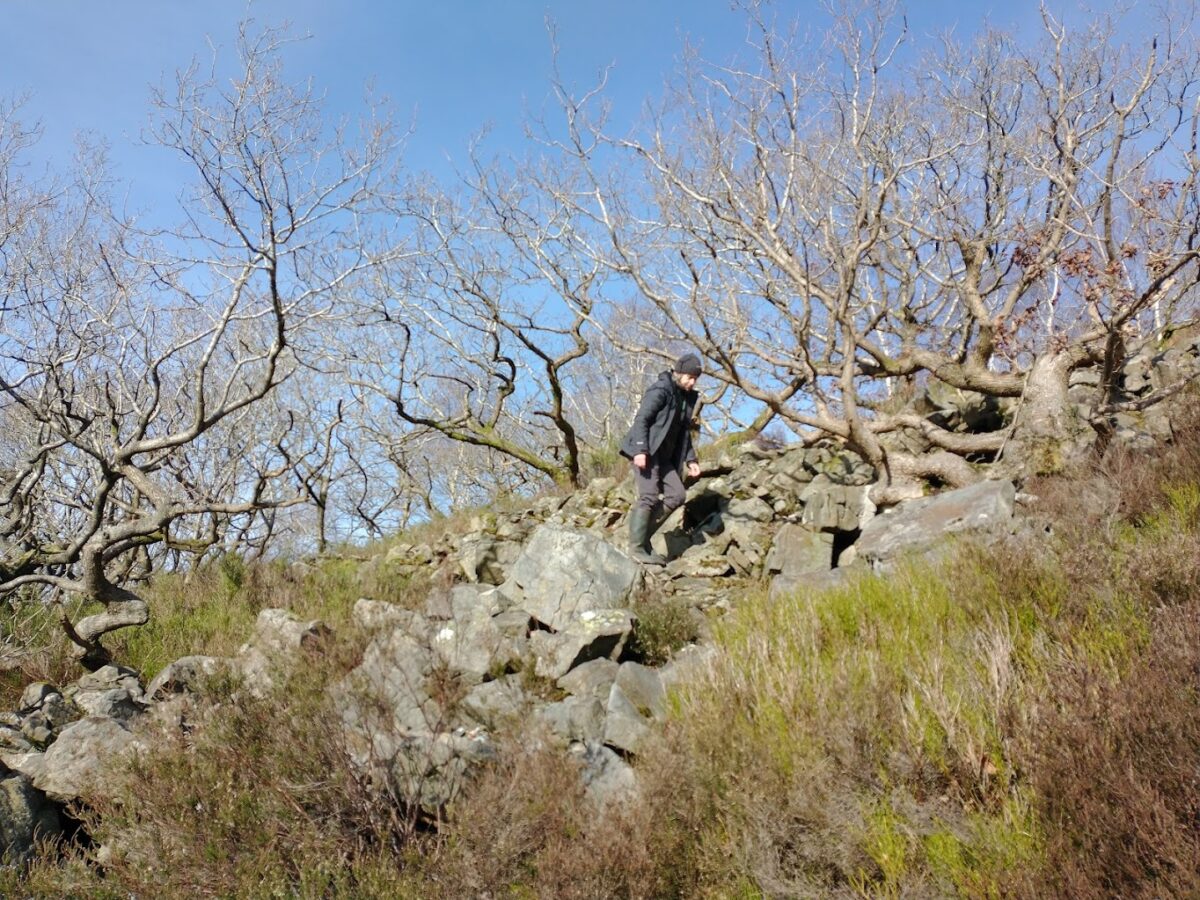Three bryologists joined the lichen party for the scenic walk from Little Town to Keskadale Farm. It was nice to be shown Ricasolia (Lobaria) virens and other big lichens on an ash pollard, but there were clearly numerous other interesting things to distract the lichenologists, so we left them to it and made our way up through the bracken, gorse and heather to the edge of the wood.
Keskadale Oakwood lies on a steep south-east facing slope at between 300 and 450m above sea level. Together with the nearby Birkrigg and Young Wood near Mungrisedale, it one of the highest altitude oak woodlands in England, and has been designated as an SSSI because of this. It is part of the much larger Buttermere Fells SSSI which stretches from Honister Pass to Whinlatter. The underlying rocks are Skiddaw slates, the oldest rocks in Cumbria. Most of the wood lies within NY2019. 43 bryophyte species have previously been recorded for this monad, but there have been no records since the 1960s.
The first thing we noticed was how dry everything was. There are no permanent watercourses in the wood, and lack of rain the previous week meant that the bryophytes were rather inconspicuous. Spray bottles were definitely required! Secondly we were surprised by the limited range of species in the lower part of the wood. Hylocomium splendens was fairly ubiquitous with some Dicranum scoparium, Polytrichum formosum, Isothecium myosuroides, Hypnum andoi, Pseudoscleropodium purum, Rhytidiadelphus loreus and Mnium hornum. The introduced Orthodontium lineare, with its distinctive capsules, also proved to be quite frequent. However there were notable absences. We did not find any Leucobryum glaucum, Dicranum majus or Bazzania trilobata. Even Rhytidiadelphus squarrosus was not found (although it must surely be present?).
Climbing up the slope we started to record more species, particularly around exposed rocks. Although Skiddaw slates are typically very acidic, rocks provide niches for species different to those found on the woodland floor. Both Racomitrium affine and R. lanuginosum were frequently encountered here, as well as Andreaea rupestris, though A. rothii seemed to be lacking until one patch was found at the end of the day. Liverworts also started to put in an appearance including Scapania gracilis, Lophozia ventricosa, Lepidozia reptans and three Orthocaulis (formerly Barbilophozia) species, O. floerkei, O. attenuata and O. atlantica. A small acrocarp with orange- brown capsules turned out to be Rhabdowisia fugax, probably the most interesting find of the day and a new species for all of us. Polytrichum piliferum was quite frequent and Hedwigia stellata was also found at one location. In a few places we saw non-fruiting Diphyscium foliosum with its distinctive thick, opaque, tongue-shaped leaves. Tree trunks and branches had limited epiphytes; they were mainly covered with Hypnum andoi, though we did find small amounts of Frullania tamarisci, Ulota crispa and Lewinskya affinis, as well as Scapania gracilis. Even Metzgeria furcata was not seen.
Coming out at the top of the wood, we were treated to a magnificent view of the Newlands Valley and surrounding fells. The presence of young oak trees here amongst the tall heather is hopefully a sign that the wood is expanding, although sheep and deer are still slowing this process. Small cushions of Bartramia pommiformis were found at the top of Ard Gill. Here we met the lichen group briefly before heading down the steep slopes back to the valley floor. Although only 36 species were recorded, it was a most interesting and enjoyable day in spectacular surroundings.
Text: Kerry Milligan
Photos: Kerry Milligan and Clare Shaw























